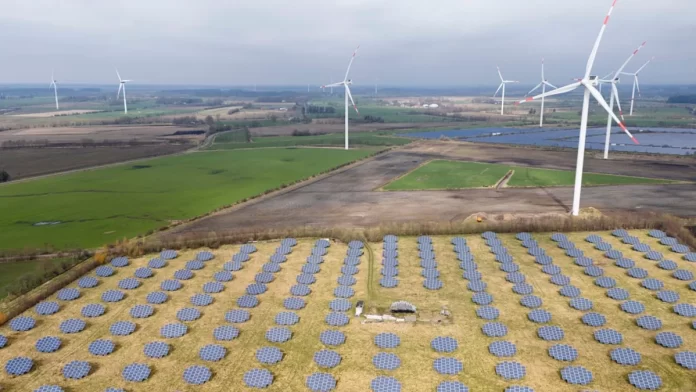Who knew industrial waste could be key to renewable energy storage? Could you explain how scientists are transforming TPPO into batteries and what impact this might have on sustainable energy solutions?.
As the world shifts towards sustainable energy, one of the biggest challenges remains energy storage. Renewable sources like solar and wind are intermittent, requiring efficient storage solutions to ensure a stable power supply. Surprisingly, scientists have found a potential breakthrough in an unlikely source: industrial waste.
Recent research has focused on Triphenylphosphine Oxide (TPPO)—a byproduct of chemical manufacturing—as a key component in next-generation batteries. This could revolutionize energy storage while addressing waste management issues. But how does this transformation work, and what does it mean for the future of green energy?
Table of Contents
Toggle1. What Is TPPO and Why Is It Important?
Understanding Triphenylphosphine Oxide (TPPO)
TPPO is a waste product generated in the pharmaceutical and chemical industries. Traditionally, it has been difficult to recycle, leading to environmental concerns. However, recent discoveries suggest that TPPO’s unique chemical properties make it a promising candidate for battery technology.
Key Properties That Make TPPO Useful for Energy Storage:
- High thermal stability, ensuring safe operation in batteries.
- Efficient electron transfer capabilities, crucial for energy storage.
- Abundance as industrial waste, making it a low-cost and sustainable material.
2. How Scientists Are Transforming TPPO into Batteries
The Chemical Process Behind TPPO-Based Batteries
Researchers have developed methods to modify TPPO and incorporate it into battery electrodes. By applying electrochemical treatments, TPPO can be turned into a conductive material that enhances battery performance.
The process typically involves:
- Purifying and refining TPPO from industrial waste.
- Modifying its molecular structure to improve conductivity.
- Integrating TPPO into lithium-ion or sodium-ion battery designs.
How TPPO-Based Batteries Compare to Traditional Ones
| Feature | TPPO-Based Batteries | Traditional Lithium-Ion Batteries |
|---|---|---|
| Raw Material | Industrial waste (TPPO) | Mined lithium & cobalt |
| Sustainability | Recycles waste, eco-friendly | Environmental concerns |
| Stability | High thermal stability | Potential overheating risks |
| Cost | Lower due to waste utilization | Higher due to raw material costs |
3. Potential Impact on Renewable Energy Storage
Enhancing Solar and Wind Energy Storage
One of the biggest limitations of solar and wind power is their inconsistent output. TPPO-based batteries could provide a cost-effective and scalable way to store excess energy, making renewables more reliable.
Reducing Dependence on Rare Earth Metals
Current lithium-ion batteries rely on cobalt and nickel, which are expensive and environmentally harmful to mine. TPPO-based alternatives could reduce reliance on these materials, making batteries more sustainable and affordable.
Lowering Industrial Waste Pollution
By repurposing TPPO, industries can reduce waste disposal costs while contributing to green energy solutions. This aligns with the principles of a circular economy, where waste is minimized and reused.
4. Challenges and Future Developments
While TPPO-based battery technology is promising, some challenges remain:
- Scaling up production to meet global energy storage demands.
- Optimizing battery lifespan and performance for long-term use.
- Regulatory approval and safety testing for widespread commercial adoption.
What’s Next for TPPO-Based Batteries?
Ongoing research aims to refine TPPO modification techniques and explore new ways to integrate it into grid-scale energy storage solutions. If successful, TPPO could become a cornerstone of sustainable battery technology in the coming years.
Final Thoughts: A Game-Changer for Renewable Energy
The discovery that industrial waste can power the future is a testament to human innovation. By converting TPPO into high-performance batteries, scientists are solving two major problems at once—energy storage and waste reduction.
As research progresses, TPPO-based batteries could become a key player in the global transition to renewable energy, offering a cost-effective, sustainable, and scalable solution.








